Address
304 North Cardinal
St. Dorchester Center, MA 02124
Work Hours
Monday to Friday: 7AM - 7PM
Weekend: 10AM - 5PM
Address
304 North Cardinal
St. Dorchester Center, MA 02124
Work Hours
Monday to Friday: 7AM - 7PM
Weekend: 10AM - 5PM

In recent years, the culinary landscape has been revolutionized by the advent of commercial air fryers. These appliances have not only changed the way we cook but have also spurred a wave of innovation within the kitchen appliance industry. This shift has been driven by consumer demand for healthier cooking methods and the desire for convenience without compromising on taste. As we delve into the world of commercial air fryer factories, we discover a dynamic industry that’s constantly evolving, bringing us closer to a future where cooking is both health-conscious and hassle-free.
The commercial air fryer industry has experienced a meteoric rise, transforming the landscape of kitchen appliances. Once a niche product, these innovative cooking devices have now become a staple in commercial kitchens worldwide. Their popularity can be attributed to several key factors that have propelled them to the forefront of culinary innovation.
Once confined to home kitchens, air fryers have made their mark in the commercial sector with their ability to offer healthier, faster, and more efficient cooking solutions. The technology behind air frying involves circulating hot air around food, which creates a crispy outer layer while reducing the amount of oil needed, making it a healthier alternative to traditional frying methods.
The health-conscious consumer trend has played a significant role in the surge of commercial air fryers. With the increasing awareness of heart-healthy diets and reduced calorie intake, these appliances have become a favorite among chefs and restaurant owners looking to cater to their patrons’ demands. The ability to cook a variety of foods with minimal oil has opened up new possibilities for creating dishes that are both delicious and nutritious.
Moreover, the convenience factor cannot be overlooked. Commercial air fryers are designed to handle high-volume cooking, making them ideal for busy kitchens. Their compact size and efficient heat distribution allow for quick and easy preparation of a wide range of dishes, from crispy French fries to golden-brown chicken wings. This efficiency has not only increased productivity but has also reduced the time and labor costs associated with cooking.
The versatility of commercial air fryers is another reason for their rapid ascent. These appliances can be used to cook a diverse array of foods, from vegetables to meats, seafood, and even desserts. This flexibility has allowed chefs to experiment with new recipes and menu items, enhancing the dining experience for customers.
Innovation in the design and technology of commercial air fryers has also played a crucial role in their rise. Modern units come equipped with features like programmable settings, timers, and even temperature controls, allowing for precise cooking every time. Some models even have features like auto shut-off and adjustable fan speeds, ensuring safety and optimal cooking results.
The market for commercial air fryers has been further bolstered by the availability of energy-efficient models. With the growing emphasis on sustainability and energy conservation, these appliances offer a greener solution that aligns with the values of eco-conscious businesses.
The integration of commercial air fryers into the foodservice industry has not only been a response to consumer demands but has also driven a shift in the way food is produced and served. Restaurants and cafes are now able to offer a wider variety of menu items that were previously unattainable due to the limitations of traditional cooking methods.
Furthermore, the rise of commercial air fryers has sparked a wave of innovation within the industry. Manufacturers are constantly pushing the boundaries of what these appliances can do, with some even incorporating smart technology that allows for remote monitoring and control. This level of connectivity is not only convenient for chefs but also opens up new possibilities for data-driven cooking and menu planning.
The impact of commercial air fryers extends beyond the kitchen. They have also become a key component in the foodservice industry’s sustainability efforts. By reducing the amount of oil used in cooking, these appliances help to minimize waste and environmental impact. This has made them an attractive option for businesses looking to adopt more sustainable practices.
In conclusion, the rise of commercial air fryers is a testament to the power of innovation and consumer demand. As these appliances continue to evolve, they are poised to become an even more integral part of the kitchen appliance landscape, offering a healthier, more efficient, and versatile solution for commercial kitchens around the globe.

The commercial air fryer industry has seen a remarkable surge in recent years, transforming the way we approach cooking and food preparation. This upward trend isn’t just a fleeting fad; it’s a testament to the evolving consumer preferences and the increasing demand for healthier cooking alternatives. To delve into the market dynamics, we must examine the factors driving this growth and the strategies that manufacturers are employing.
Consumer Health ConsciousnessOne of the primary drivers behind the popularity of commercial air fryers is the rising health consciousness among consumers. As people become more aware of the risks associated with deep-frying, they’re seeking out alternative cooking methods that offer similar flavors but with less oil. This shift has created a significant market opportunity for air fryers, which are perceived as a healthier cooking solution.
Technological AdvancementsThe technology behind commercial air fryers has also seen significant advancements. These appliances now come with features like programmable settings, adjustable temperature controls, and even the ability to cook a variety of foods, from vegetables to meats. These technological improvements have not only enhanced the user experience but have also expanded the market appeal of air fryers.
Retailer EmbraceRetailers have been quick to recognize the potential of commercial air fryers. Supermarkets, kitchenware stores, and online platforms are flooded with a variety of models, catering to different budgets and needs. This widespread availability has played a crucial role in the adoption of air fryers, as consumers are more likely to purchase products they see as accessible and readily available.
Competitive LandscapeThe commercial air fryer industry is becoming increasingly competitive, with a multitude of brands vying for market share. Established appliance manufacturers are entering the market, along with new startups that are focused solely on air fryer technology. This competition has led to a proliferation of innovative features and designs, as companies strive to differentiate themselves from their rivals.
Regulatory EnvironmentRegulatory factors also play a significant role in the market dynamics of the commercial air fryer industry. For instance, health and safety regulations can influence the design and manufacturing processes. Additionally, certifications and endorsements from health organizations can boost consumer confidence and sales.
Marketing StrategiesEffective marketing strategies are essential for success in the commercial air fryer market. Brands are leveraging social media, influencer partnerships, and cooking demonstrations to showcase the benefits of air frying. Educational content that highlights the health benefits and cooking versatility of air fryers is also helping to drive sales.
Consumer Behavior ShiftsConsumer behavior is shifting towards convenience and efficiency. Air fryers offer a quick and easy way to prepare meals with minimal cleanup, which aligns with the busy lifestyles of many consumers. This trend is further reinforced by the growing popularity of meal prep and batch cooking, where air fryers can be a key tool for preparing healthy, portion-controlled meals.
Product Lifecycle ManagementManaging the lifecycle of a product is critical in the commercial air fryer industry. From initial design to product lifecycle, companies must consider factors like market trends, consumer feedback, and technological advancements. This proactive approach ensures that manufacturers stay ahead of the curve and continue to meet consumer expectations.
Economic FactorsEconomic conditions can significantly impact the commercial air fryer market. In times of economic uncertainty, consumers may prioritize value over luxury, leading to increased sales of more affordable air fryer models. Conversely, during periods of economic growth, consumers may be more willing to invest in premium models with advanced features.
Sustainability InitiativesSustainability is becoming a key consideration for consumers and businesses alike. Manufacturers are responding by producing air fryers with eco-friendly materials and energy-efficient designs. This focus on sustainability not only aligns with consumer values but can also be a competitive advantage in the market.
Global ExpansionThe commercial air fryer industry is not limited to a single region; it’s a global phenomenon. As the market grows, manufacturers are looking to expand their reach into new international markets. This expansion requires an understanding of local consumer preferences, cultural differences, and regulatory frameworks.
In summary, the commercial air fryer industry is experiencing a dynamic phase marked by health-conscious consumers, technological innovation, competitive pressures, and changing market trends. Navigating this landscape requires a strategic approach that balances consumer needs with the latest market insights.
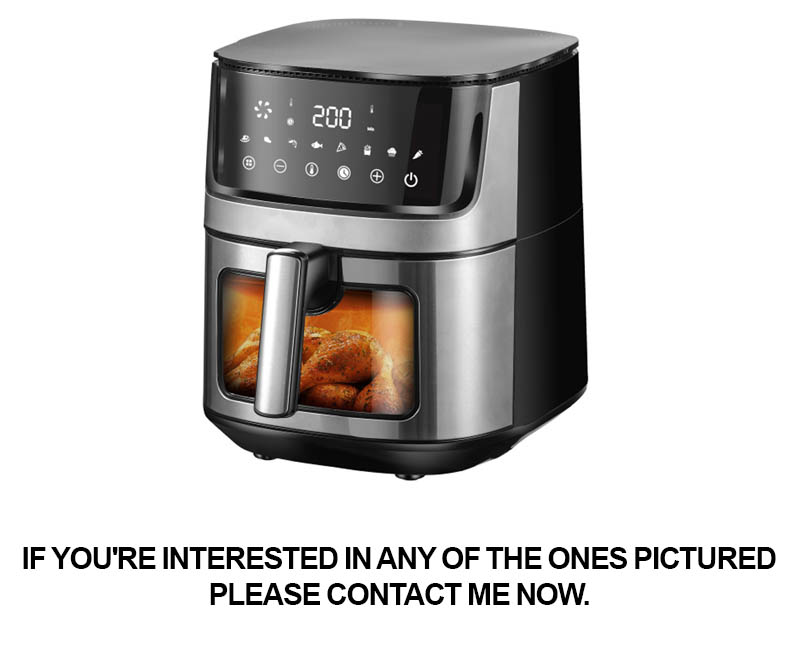
In the realm of kitchen appliances, the air fryer has emerged not just as a cooking gadget but as a beacon of innovation. As the market for commercial air fryers continues to soar, manufacturers are pushing the boundaries of design to create appliances that are not only efficient but also aesthetically pleasing and user-friendly. Here’s a look at how creativity is shaping the landscape of air fryer manufacturing.
Designing for Functionality and SafetyThe core of any air fryer’s design is its functionality. Modern commercial air fryers are engineered with safety in mind, featuring non-stick coatings that prevent food from sticking and making cleaning a breeze. The latest models often come with temperature control settings that allow for precise cooking, ensuring that food is cooked to perfection without overcooking or burning.
Embracing Modern AestheticsAesthetics play a crucial role in the commercial air fryer market. Manufacturers are increasingly focusing on sleek, modern designs that appeal to the contemporary kitchen aesthetic. The use of high-quality materials such as stainless steel and tempered glass has become standard, offering durability and a polished look that fits seamlessly into any commercial kitchen setting.
User Experience is KeyThe user experience is at the forefront of design considerations. Touchscreen interfaces are replacing old-fashioned dials, making it easier for operators to navigate settings and programs. Intuitive interfaces ensure that even those unfamiliar with the appliance can quickly grasp how to use it, which is especially important in high-volume commercial settings.
Incorporating Smart TechnologySmart technology integration is a growing trend in air fryer manufacturing. Smart features like Wi-Fi connectivity and mobile app control allow operators to monitor and adjust cooking times and temperatures remotely. This not only adds convenience but also opens up new possibilities for kitchen management, such as batch cooking and monitoring multiple units simultaneously.
Eco-Friendly and Sustainable DesignsWith environmental concerns on the rise, air fryer manufacturers are also focusing on sustainability. This includes using recycled materials, reducing energy consumption, and designing products that are recyclable at the end of their life cycle. Eco-friendly designs are not only beneficial for the planet but also resonate with eco-conscious consumers and businesses.
Customization for Specific NeedsCommercial kitchens vary widely in terms of size, capacity, and the types of food they prepare. To cater to this diversity, air fryer manufacturers are offering customized solutions. From countertop models to large-capacity units designed for commercial use, there’s a design for every kitchen environment. Customizable features, such as additional shelves or adjustable cooking racks, allow for versatility in the kitchen.
Innovative Cooking TechniquesInnovation extends beyond the physical design to the cooking techniques themselves. Some air fryers now come with features that mimic traditional cooking methods, such as rotisseries or convection capabilities. This allows for a broader range of recipes to be cooked using the air fryer, enhancing its appeal to chefs and culinary professionals.
Safety Features for Diverse EnvironmentsSafety is paramount in commercial kitchens, and air fryer designs are reflecting this. From automatic shut-off mechanisms to child locks, manufacturers are incorporating features that prevent accidents and ensure the appliance operates safely in a variety of settings, from busy restaurants to healthcare facilities.
Interactive User InterfacesInteractive interfaces are becoming more common, with some air fryers offering interactive displays that can provide cooking tips, recipe ideas, and even nutritional information. This not only educates users but also encourages them to experiment with new recipes, fostering a deeper engagement with the appliance.
Customizable Cooking ProgramsTo meet the demands of diverse menus, commercial air fryers now offer customizable cooking programs. Operators can save their favorite settings for quick access, or even program new recipes directly into the unit. This flexibility allows for a wide range of dishes to be prepared efficiently and consistently.
In summary, the design of commercial air fryers is a testament to the fusion of technology, creativity, and practicality. As the industry continues to evolve, manufacturers are focusing on enhancing user experience, sustainability, and the ability to adapt to various kitchen environments, all while delivering top-notch performance.

The commercial air fryer sector is a hotbed of innovation and constant evolution. To understand the current pulse of this dynamic industry, let’s delve into the market trends that are heating up the scene.
Consumers are increasingly health-conscious, and this shift is significantly impacting the commercial air fryer market. The demand for healthier cooking alternatives that reduce oil usage has surged, with air fryers becoming a staple in many professional kitchens. From fast-food chains to gourmet restaurants, the appeal of low-fat frying is undeniable.
Gone are the days when air fryers were just a niche product. Today, they are a must-have in any kitchen that values efficiency and quality. The compact size and ease of use have made them a favorite among busy chefs who need to prepare a large volume of food in minimal time.
The integration of smart technology is reshaping the commercial air fryer market. Many modern units now come with features like digital displays, preset cooking programs, and Wi-Fi connectivity, allowing operators to remotely control and monitor the frying process. This level of technology not only enhances convenience but also ensures consistent results across multiple batches.
Energy efficiency is another key trend driving the market. With rising energy costs, commercial air fryers that consume less power while maintaining high performance are becoming more attractive. The focus on energy-saving models is expected to grow as businesses look to reduce their operational expenses and environmental footprint.
Customization is on the rise, too. Factories are producing air fryers with adjustable temperature settings and variable cooking times, catering to a wider range of recipes and food types. This flexibility allows chefs to fry everything from crispy French fries to juicy chicken wings with precision.
Sustainability is a buzzword that’s making waves in the commercial air fryer sector. There’s a growing trend towards eco-friendly designs, including the use of recyclable materials and energy-saving components. As businesses strive to be more socially responsible, air fryers that are environmentally conscious are gaining popularity.
Safety features are also becoming a focal point in air fryer manufacturing. With the risk of fires and burns inherent in frying, factories are incorporating safety mechanisms like automatic shut-off and non-slip bases to prevent accidents. These features not only protect staff but also contribute to a better overall user experience.
The market for commercial air fryers is also seeing an international expansion. As the demand for healthier fried food options spreads across borders, factories are adapting their products to meet various regulatory standards. This globalization is creating new opportunities for manufacturers to tap into emerging markets.
Innovation in the commercial air fryer sector is not just about the appliance itself; it’s also about the accessories and add-ons that can enhance its capabilities. From oil separators to temperature probe attachments, the market for accessories is growing alongside the base units.
Lastly, the rise of health fads and diet trends is directly influencing the design and features of commercial air fryers. As more people adopt vegan, keto, and paleo diets, there’s a demand for air fryers that can handle a variety of low-carb and high-protein recipes. Factories are responding by creating air fryers with features that cater to these specific dietary needs.
In conclusion, the commercial air fryer sector is a fast-paced and innovative space where health consciousness, technological advancements, sustainability, and market expansion are key drivers. By keeping up with these trends, air fryer manufacturers are ensuring that their products remain at the forefront of the commercial kitchen revolution.
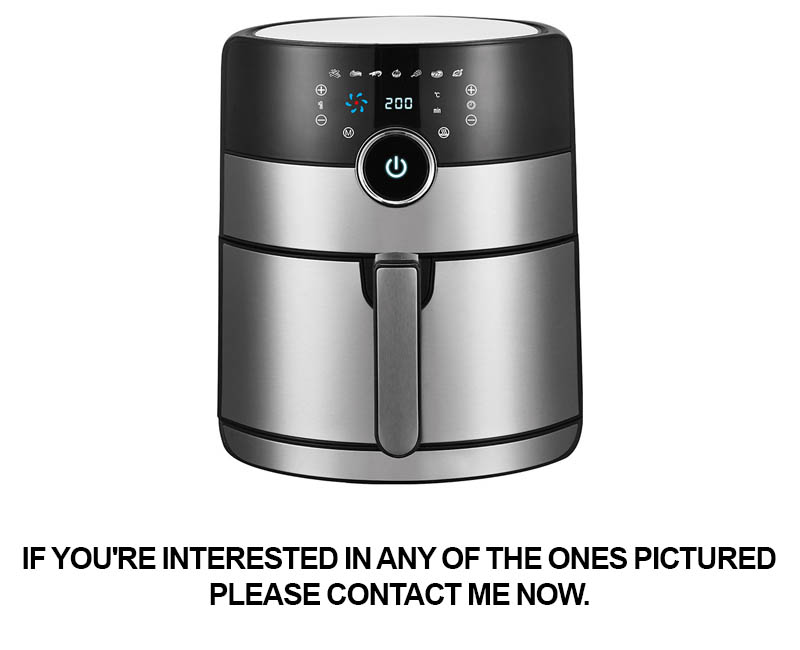
In the ever-evolving landscape of the air fryer industry, data-driven decisions are pivotal in shaping the strategies and operations of air fryer factories. Numbers and analytics are not just tools for analysis; they are the blueprints that guide innovation, production, and market penetration. Let’s delve into how industry numbers impact the air fryer factory landscape.
The demand for air fryers continues to soar, with sales figures reflecting a significant increase year over year. These numbers paint a clear picture of consumer preference, with a particular focus on compact, energy-efficient models. Factories must stay attuned to these trends to ensure they’re producing what the market craves.
Energy efficiency has become a key metric for air fryer design. Consumers are not just looking for healthier alternatives to deep-frying; they’re also conscious of their carbon footprint. Air fryer factories are responding by integrating advanced technology that reduces energy consumption without compromising performance. The data shows that these eco-friendly features are a strong selling point.
Material quality and longevity are also crucial factors in the air fryer market. The durability of the appliance is reflected in its price point and customer satisfaction ratings. Factories that prioritize high-quality components and rigorous testing are seeing better retention rates and higher customer loyalty. The data backs this up, revealing a direct correlation between robust construction and consumer satisfaction.
The market for smart air fryers is expanding rapidly. Connectivity features and the ability to control appliances remotely are becoming increasingly popular. Air fryer factories that incorporate IoT technology into their products are not only meeting the current demand but also positioning themselves for future growth. The data indicates a surge in sales for smart appliances, suggesting a strong trend towards integration with smart home ecosystems.
Size and capacity are other variables that air fryer factories monitor closely. While compact models are popular for single-use or small households, there’s a growing segment of consumers who prefer larger, family-sized units. The data reveals that the market for these larger models is expanding, offering factories an opportunity to cater to a broader range of customer needs.
Health and wellness are at the forefront of consumer concerns, and the air fryer industry is capitalizing on this trend. The data shows a rise in demand for models that offer healthier cooking options, such as adjustable temperature controls and pre-programmed recipes. Factories that can adapt to these preferences are likely to see increased sales and market share.
Another important aspect is the variety of cooking functions. The more versatile an air fryer is, the more likely it is to appeal to a wider audience. Data from consumer feedback and market research points to a preference for air fryers that can not only fry but also bake, roast, and dehydrate. Factories that can integrate these additional features are likely to stand out in a crowded market.
Customization is also gaining traction in the air fryer sector. Personalization options, such as interchangeable cooking baskets or temperature control dials, are becoming more common. The data indicates that consumers are interested in appliances that can be tailored to their specific cooking habits and preferences.
Innovation in air fryer design is not limited to functionality. The aesthetics of the appliance are also a key consideration. The data suggests that consumers are drawn to sleek, modern designs that complement their kitchen decor. Factories that can offer a range of stylish models are likely to attract more customers.
Finally, sustainability is a growing concern for many consumers. The data reflects a rising interest in appliances that are made with sustainable materials and have a lower environmental impact throughout their lifecycle. Air fryer factories that can demonstrate their commitment to sustainability are likely to appeal to environmentally conscious buyers.
In conclusion, the air fryer factory landscape is shaped by a multitude of industry numbers that reflect consumer preferences, market trends, and technological advancements. By analyzing these figures, factories can make informed decisions that lead to product development, marketing strategies, and operational improvements, ultimately driving success in a highly competitive market.
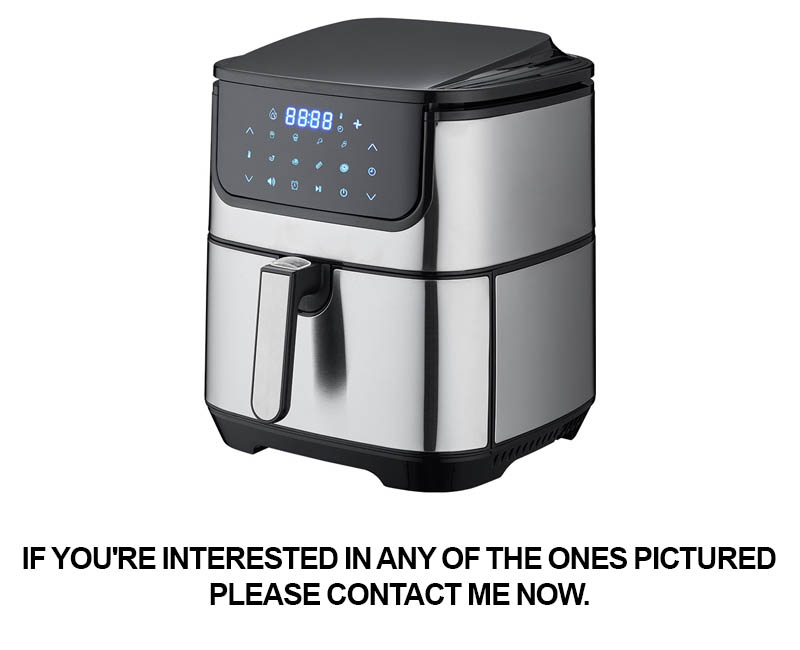
The evolution of commercial air fryer production has been significantly influenced by technological advancements, reshaping the industry in profound ways. Here’s a glimpse into how technology has transformed this sector:
Efficiency and Energy ConservationModern air fryers are a testament to the fusion of technology and culinary innovation. These appliances now boast sophisticated systems that optimize heat distribution, ensuring consistent cooking temperatures. This efficiency not only reduces energy consumption but also translates to lower operating costs for factories and end-users alike. The integration of smart thermostats and automated control systems has made it possible to maintain precise cooking temperatures, cutting down on energy waste and extending the lifespan of the equipment.
Material InnovationsMaterials used in the construction of air fryers have also seen a remarkable transformation. Lightweight, heat-resistant, and durable materials like stainless steel and advanced polymers have become standard. These materials not only enhance the aesthetic appeal of the fryers but also improve their durability and longevity. The use of these materials in manufacturing allows for the creation of sleeker, more functional designs that can withstand the demands of commercial kitchens.
Customization and PersonalizationTechnology has opened doors to customization in air fryer production. Factories can now cater to specific market demands by offering air fryers with a variety of features, such as programmable settings, multiple cooking modes, and even Bluetooth connectivity for remote monitoring. This level of personalization not only caters to diverse customer needs but also enables manufacturers to create products that resonate with niche markets.
Precision in ProductionPrecision engineering has become a cornerstone in the production of commercial air fryers. Advanced machinery, like computer numerical control (CNC) machines, ensures that every part is manufactured to exact specifications. This level of precision not only enhances the performance of the fryers but also reduces the likelihood of defects. The adoption of robotics and automated assembly lines has streamlined the production process, increasing output and reducing labor costs.
Safety and ComplianceWith the rise in health and safety concerns, technology has played a pivotal role in ensuring that commercial air fryers meet stringent industry standards. Features like automatic shut-off systems, temperature control sensors, and child-proof locks are now commonplace. These advancements not only protect users but also give manufacturers a competitive edge by offering peace of mind to customers.
Data and AnalyticsThe integration of data analytics in the production process has revolutionized the way air fryers are made. By analyzing production data, manufacturers can identify patterns and inefficiencies, leading to continuous improvement in the manufacturing process. This data-driven approach allows for predictive maintenance, reducing downtime and improving overall equipment effectiveness (OEE).
Sustainability InitiativesTechnology has also led to more sustainable practices in air fryer manufacturing. From energy-efficient production processes to the use of recycled materials, manufacturers are increasingly focusing on reducing their environmental footprint. This commitment to sustainability not only appeals to eco-conscious consumers but also contributes to a positive brand image.
Global ReachTechnology has expanded the reach of commercial air fryer manufacturers globally. With the advent of e-commerce and digital marketing, products can be sold and distributed to markets around the world without the need for extensive physical presence. This global connectivity has opened up new opportunities for growth and has allowed manufacturers to stay ahead of international market trends.
In conclusion, the impact of technology on commercial air fryer production is multifaceted. It ranges from enhancing efficiency and reducing costs to improving safety and sustainability. As technology continues to evolve, the air fryer industry can expect even more innovative solutions that will further shape the landscape of kitchen appliances.
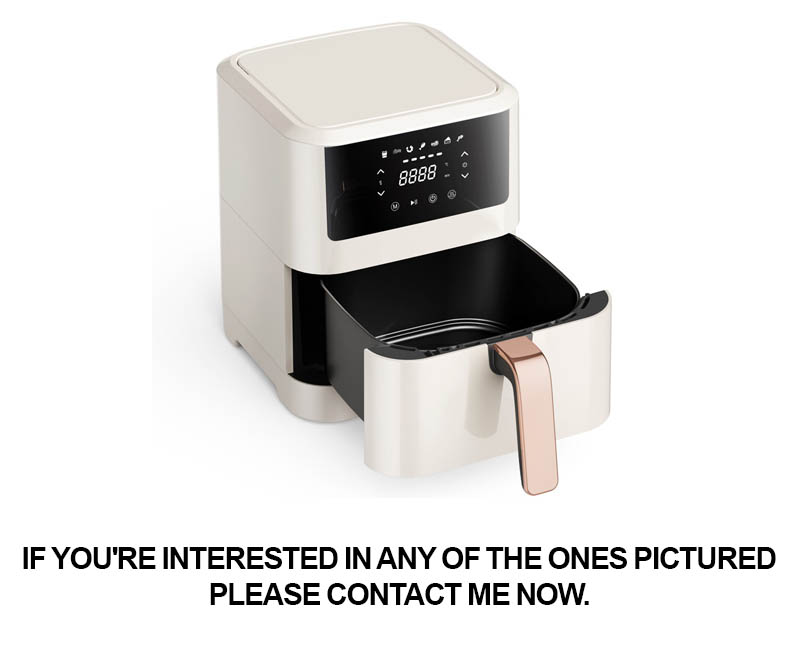
In the competitive world of commercial air fryer production, a handful of factories have emerged as industry leaders, setting new standards for efficiency and innovation. These factories not only produce high-quality air fryers but also share unique success stories that highlight their strategies and the impact they’ve made in the market. Let’s delve into a few of these case studies to understand what makes these top commercial air fryer factories stand out.
One factory that has made a significant mark in the industry is known for its cutting-edge design team. They’ve revolutionized the market with their sleek and efficient air fryer models, which are not only aesthetically pleasing but also highly functional. Their success can be attributed to a relentless pursuit of innovation, where every design iteration is meticulously tested for performance and durability.
Another standout case is a factory that has focused on sustainability. They’ve integrated eco-friendly materials into their production process and have developed a range of air fryers that consume less energy and reduce waste. This commitment to green technology has not only helped them appeal to environmentally conscious consumers but has also opened up new markets, particularly in Europe and Asia, where sustainability is a growing concern.
There’s also a factory that has excelled in customizing their products to meet the diverse needs of various customer segments. From fast-food chains to hotels and restaurants, this factory offers tailor-made solutions that optimize kitchen space and streamline operations. Their ability to understand and adapt to specific market demands has led to long-term partnerships with several renowned brands.
One factory has gained recognition for its rigorous quality control process. Each air fryer that rolls off the assembly line is subject to multiple layers of inspection, ensuring that only the highest standards are met. This dedication to quality has earned them a reputation for reliability, with customers consistently referring to their products as the gold standard in the commercial air fryer market.
Innovation in technology has also played a pivotal role in the success of a particular factory. They’ve invested heavily in R&D to introduce features like digital displays, wireless connectivity, and intelligent cooking modes that make their air fryers not just appliances but smart kitchen companions. This technology-driven approach has allowed them to command a premium price point while also attracting tech-savvy consumers.
Another factory has leveraged the power of partnerships to expand its reach. By collaborating with local suppliers and manufacturers, they’ve been able to source components at competitive prices and maintain a robust supply chain. This strategy has helped them reduce costs while also ensuring a steady flow of raw materials, which is crucial in the fast-paced air fryer industry.
A case in point is a factory that has embraced digital marketing and e-commerce to bypass traditional distribution channels. They’ve developed a direct-to-consumer model that allows them to offer competitive pricing and personalized customer service. This approach has been particularly effective in reaching global markets, where the internet has become a key platform for consumers to discover and purchase new products.
The factories mentioned above have all found their unique niches within the commercial air fryer sector, and their success stories offer valuable lessons for aspiring entrepreneurs and established businesses alike. Whether it’s through innovative design, sustainable practices, customization, quality control, technology integration, strategic partnerships, or digital marketing, these factories have proven that a combination of smart strategies and a customer-centric mindset can lead to remarkable achievements in the world of commercial air fryer production.
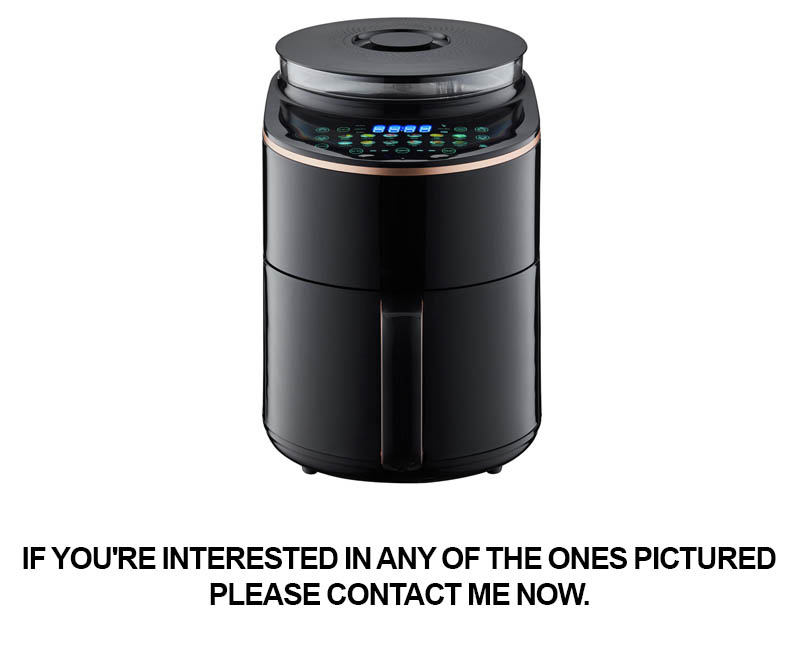
The commercial air fryer market has been witnessing a surge in demand, driven by consumer preferences for healthier cooking methods and the growing need for efficient kitchen appliances. As the industry evolves, the landscape is shaped by a blend of technological advancements, design innovations, and market trends. Let’s delve into some key aspects that are reshaping the future of commercial air fryer production.
Energy Efficiency and SustainabilityAs the world becomes more environmentally conscious, energy efficiency has become a crucial factor in the manufacturing process. Commercial air fryer factories are now incorporating advanced technologies that not only reduce energy consumption but also promote sustainability. This shift is evident in the use of LED lighting, energy-saving motors, and materials that are recyclable or made from renewable resources.
Smart Technology IntegrationThe integration of smart technology in commercial air fryers is revolutionizing the industry. Factories are now producing air fryers equipped with features like touchscreens, Wi-Fi connectivity, and remote control capabilities. These innovations allow for customized cooking settings, real-time monitoring, and even the ability to program meals for later, making the commercial air fryer a versatile and convenient choice for businesses.
Health and Wellness FocusWith a growing awareness of health and wellness, commercial air fryer factories are emphasizing healthier cooking options. The demand for air fryers that can cook with less oil is on the rise, leading to the development of advanced oil filtration systems and non-stick coatings that minimize oil use. This trend is not only beneficial for health-conscious consumers but also for businesses looking to reduce operational costs.
Customization and Modular DesignTo cater to a diverse range of customers, commercial air fryer factories are offering modular and customizable designs. This includes various sizes, configurations, and features that can be tailored to specific kitchen layouts and needs. From countertop models to commercial-grade fryers designed for busy restaurants and foodservice operations, the industry is embracing flexibility to meet diverse demands.
Safety Features and User-Friendly DesignSafety is a paramount concern in the manufacturing of commercial air fryers. Modern factories are integrating safety features such as automatic shut-offs, cool-touch surfaces, and child locks to prevent accidents. User-friendly designs, including intuitive interfaces and clear instructions, are also becoming standard, ensuring that operators can use the equipment confidently and efficiently.
Market Expansion into New TerritoriesThe commercial air fryer market is not confined to a single region. Factories are expanding their reach globally, targeting emerging markets with affordable yet high-quality air fryers. This expansion is driven by the increasing popularity of healthier cooking methods and the desire for cost-effective kitchen solutions.
Collaboration with Foodservice ProfessionalsTo stay ahead in the market, commercial air fryer factories are collaborating with chefs and foodservice professionals. This partnership allows for the development of specialized fryers that can handle a variety of food types, from fried chicken to vegetables, ensuring that the air fryers can meet the demanding needs of different cuisines and establishments.
Continuous Research and DevelopmentThe future of commercial air fryer production lies in continuous research and development. Factories are investing in R&D to create more efficient, durable, and user-friendly products. This includes exploring new materials, optimizing heating elements, and developing advanced software that can improve cooking performance and energy efficiency.
In conclusion, the future of commercial air fryer production is marked by a commitment to sustainability, smart technology, health and wellness, customization, safety, global expansion, professional collaboration, and relentless innovation. As the industry continues to evolve, these factors will play a pivotal role in shaping the landscape of commercial air fryer manufacturing, ensuring that businesses have access to the latest and most effective kitchen equipment.
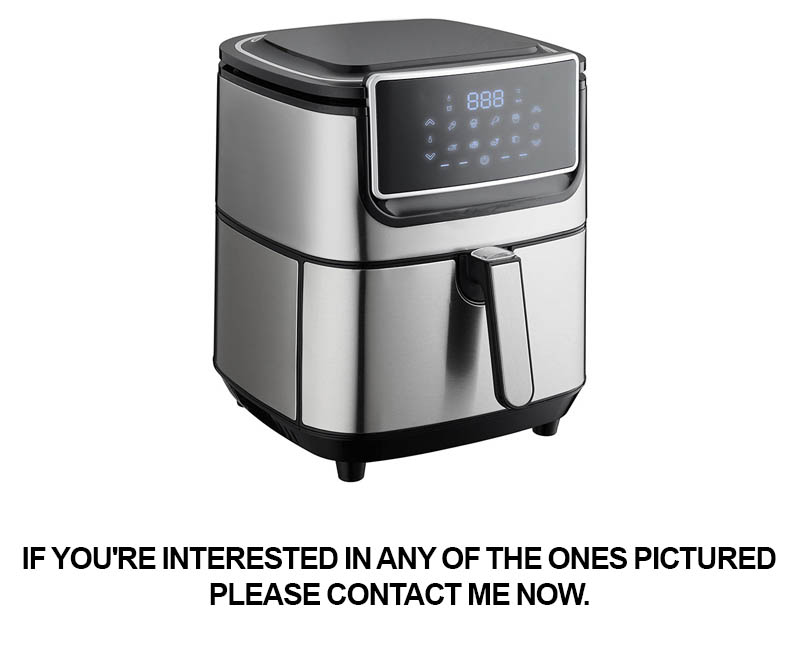
The commercial air fryer market is a dynamic and competitive field, where innovation and strategic positioning are key. Factories at the forefront of this industry are facing a mix of challenges and opportunities that shape their strategies and future growth.
Innovation in Design and FunctionalityThe competition among commercial air fryer factories is fierce, with manufacturers constantly striving to push the boundaries of design and functionality. From compact, countertop models to large-scale industrial units, each factory is looking to differentiate its products with unique features. For instance, some factories are integrating smart technology, allowing for remote monitoring and programmable settings that cater to the diverse needs of commercial kitchens.
Energy Efficiency and SustainabilityEnergy consumption is a major concern in the commercial kitchen sector. As a result, factories are focusing on developing air fryers that are not only efficient but also environmentally friendly. By using less oil and providing healthier cooking options, these air fryers are not just a trend but a necessity for businesses looking to reduce their carbon footprint and operational costs. Sustainability is a driving force behind many new design elements, from energy-efficient motors to recyclable components.
Customization and ScalabilityCustomization is a game-changer for air fryer factories. Many commercial kitchens have specific requirements that standard models cannot fulfill. Factories are responding by offering customized solutions that can be tailored to the size of the kitchen, the volume of food preparation, and even the specific types of food being cooked. Scalability is also crucial, as factories must be able to produce these custom models at scale without compromising quality.
Regulatory Compliance and SafetyThe air fryer industry is heavily regulated due to health and safety concerns. Factories must ensure that their products meet stringent safety standards, which includes everything from electrical safety to the materials used in the fryers. Staying compliant with these regulations is a challenge but also an opportunity for differentiation. Factories that can demonstrate a commitment to safety often gain a competitive edge.
Marketing and BrandingIn a crowded market, effective marketing and branding can make all the difference. Air fryer factories are investing in strong marketing strategies that emphasize the health benefits, efficiency, and versatility of their products. Branding efforts often focus on the innovation and quality that the factory stands for, helping to build trust with customers and establish a reputation for excellence.
Supply Chain ManagementThe success of air fryer factories also hinges on their supply chain management. With the global supply chain experiencing disruptions, factories must be agile and resilient. This means diversifying suppliers, optimizing inventory levels, and having contingency plans in place. The ability to manage the supply chain effectively can be a significant competitive advantage.
E-commerce and Direct-to-Consumer SalesThe rise of e-commerce has opened new channels for air fryer factories to reach customers directly. By selling through online platforms, factories can reduce the dependency on traditional retailers and build a direct relationship with end-users. This approach allows for more personalized marketing and quicker response to consumer feedback, leading to improved product development and customer satisfaction.
Collaborations and PartnershipsTo stay ahead, air fryer factories are seeking collaborations and partnerships with other companies. This could involve co-branding with foodservice companies, technology firms for integrating smart features, or even academic institutions for research and development. These alliances can lead to groundbreaking innovations and open up new markets.
Customer Support and After-Sales ServiceThe competitive landscape also requires factories to prioritize customer support and after-sales service. Providing exceptional customer service can turn satisfied customers into loyal advocates. Factories are investing in training staff, improving troubleshooting capabilities, and ensuring that their customers have a seamless experience from purchase to long-term use.
The future of the commercial air fryer industry is shaped by a combination of technological advancements, market demands, and strategic business decisions. As factories continue to navigate the challenges and seize opportunities, they are creating a landscape that is both competitive and innovative, ultimately leading to better products and experiences for commercial kitchens around the world.

In the ever-evolving culinary landscape, commercial air fryer factories have become pivotal players, driving innovation and redefining kitchen experiences. These factories, at the heart of the culinary revolution, have not only adapted to market demands but have also propelled the industry forward with their forward-thinking approaches. Their role in shaping the future of cooking is undeniable, and here’s why they stand out as leaders in the culinary revolution.
Their commitment to efficiency is evident in the sleek, energy-saving designs that these factories produce. By focusing on reducing power consumption, they are not just catering to eco-conscious consumers but also to businesses aiming to cut operational costs. The air fryers that emerge from these factories are a testament to the balance between technological advancement and environmental responsibility.
Moreover, the emphasis on health and wellness has been a game-changer. As the obesity epidemic continues to rise, these factories have stepped up to offer healthier alternatives to traditional frying methods. The ability to achieve crispy, delicious results with minimal oil has resonated with health-conscious consumers and dietitians alike. It’s this fusion of taste and health that has positioned commercial air fryer factories as trendsetters in the industry.
Customization has also become a cornerstone of success for these factories. Recognizing that one size doesn’t fit all, they offer a variety of models and functionalities to cater to diverse needs. From countertop units perfect for small restaurants to industrial-grade fryers for bustling kitchens, the versatility of these products has opened up new possibilities for chefs and operators worldwide.
Innovation isn’t just limited to product design; it extends to the supply chain and manufacturing processes. Advanced technologies like 3D printing and automation have streamlined production, ensuring that each air fryer that leaves the factory floor is of the highest quality. This efficiency not only reduces waste but also allows for quicker response times to market trends and customer demands.
The integration of smart technology is another area where these factories have made significant strides. Smart air fryers equipped with Wi-Fi connectivity and mobile apps have revolutionized the cooking experience. Users can now control their fryers remotely, receive recipe suggestions, and even monitor cooking progress from their smartphones. This level of convenience has bridged the gap between home and commercial kitchens.
Case studies from top commercial air fryer factories showcase a range of success stories. For instance, one factory has partnered with renowned chefs to develop proprietary recipes that are exclusive to their fryers. This collaboration has not only enhanced the product’s appeal but also solidified the factory’s reputation as a leader in culinary innovation. Another factory has focused on sustainable practices, using recycled materials and energy-efficient manufacturing processes, which has earned them accolades and a loyal customer base.
Looking ahead, the future of commercial air fryers is bright with predictions of further innovations. We can expect to see air fryers that not only cook but also sanitize, offering a hygienic solution for foodservice operations. The integration of artificial intelligence could lead to fryers that learn and adapt to individual preferences, making them even more user-friendly. And with the rise of plant-based diets, these factories are likely to develop air fryers that can crisp vegetables and tofu to perfection.
In navigating the competitive landscape, challenges remain. The market is saturated with brands, each vying for a share of the growing air fryer market. Staying ahead requires constant innovation, a deep understanding of consumer needs, and the ability to adapt quickly to changing trends. However, opportunities are abundant. The rise of health consciousness and the demand for convenience will continue to drive growth in this sector.
In conclusion, commercial air fryer factories are at the forefront of the culinary revolution due to their relentless pursuit of efficiency, health, customization, and technological integration. Their products are not just kitchen appliances; they are catalysts for change, reshaping the way we think about cooking and dining. As these factories continue to push boundaries and anticipate future needs, their role in shaping the future of food is undeniable.